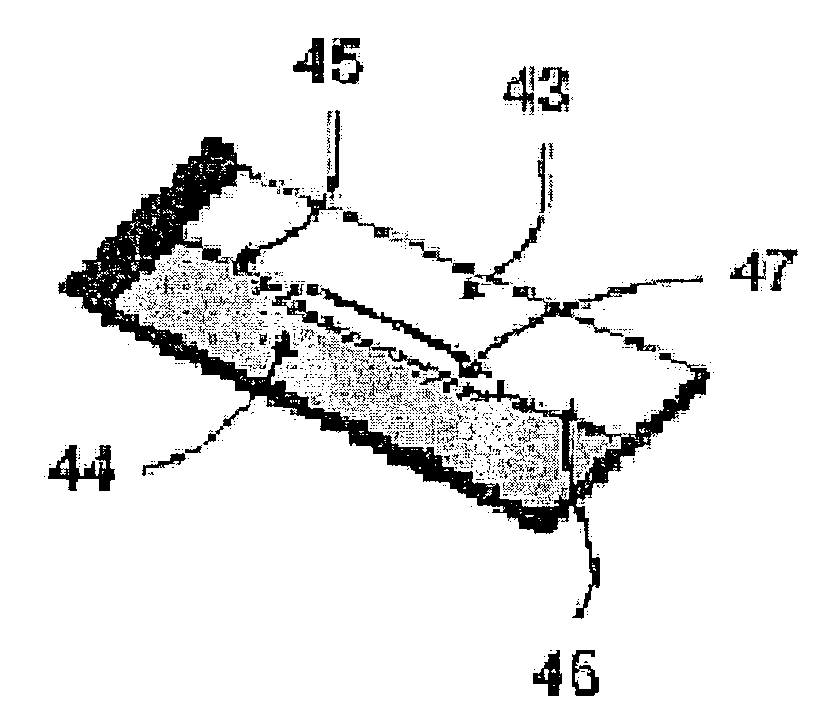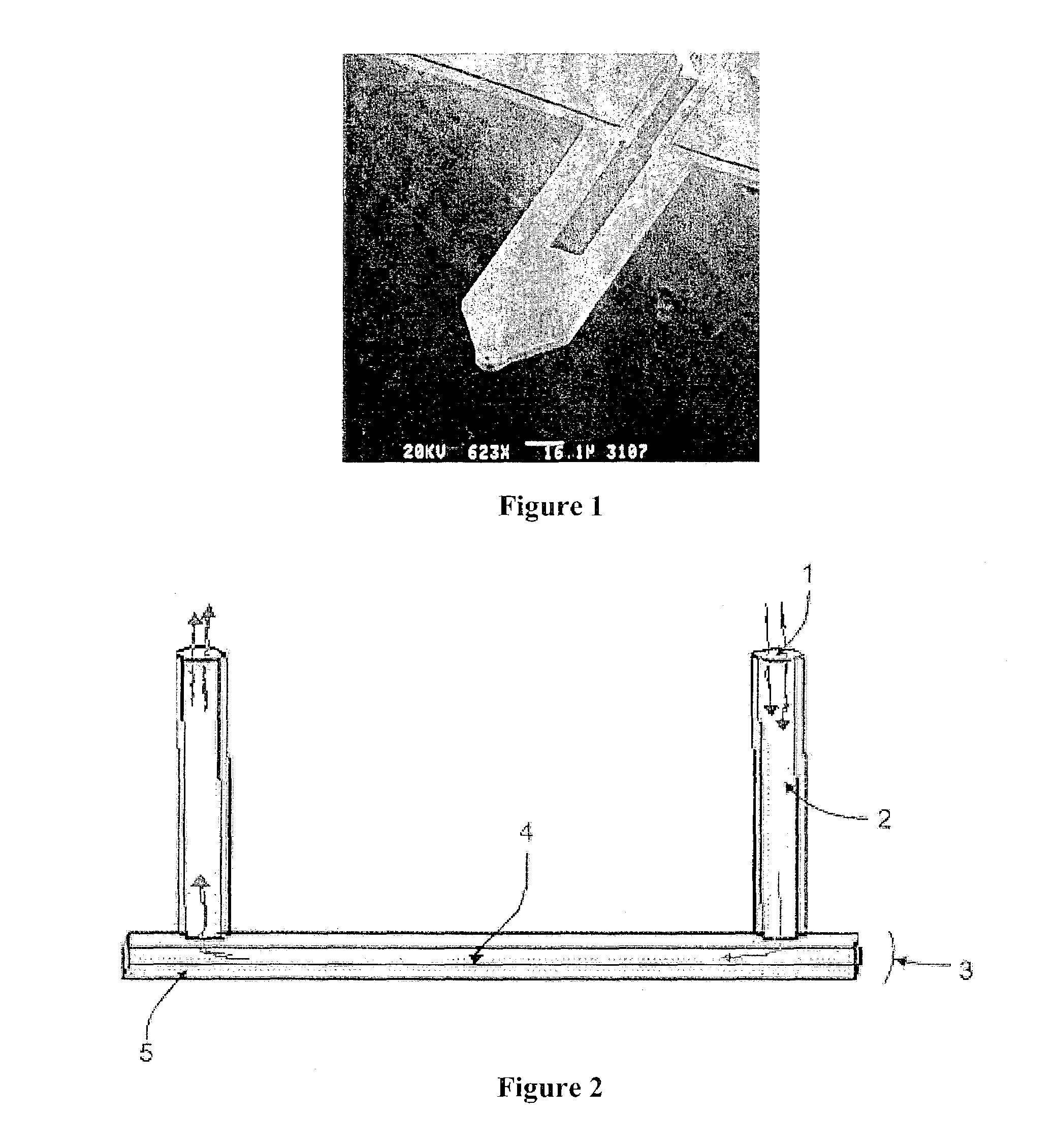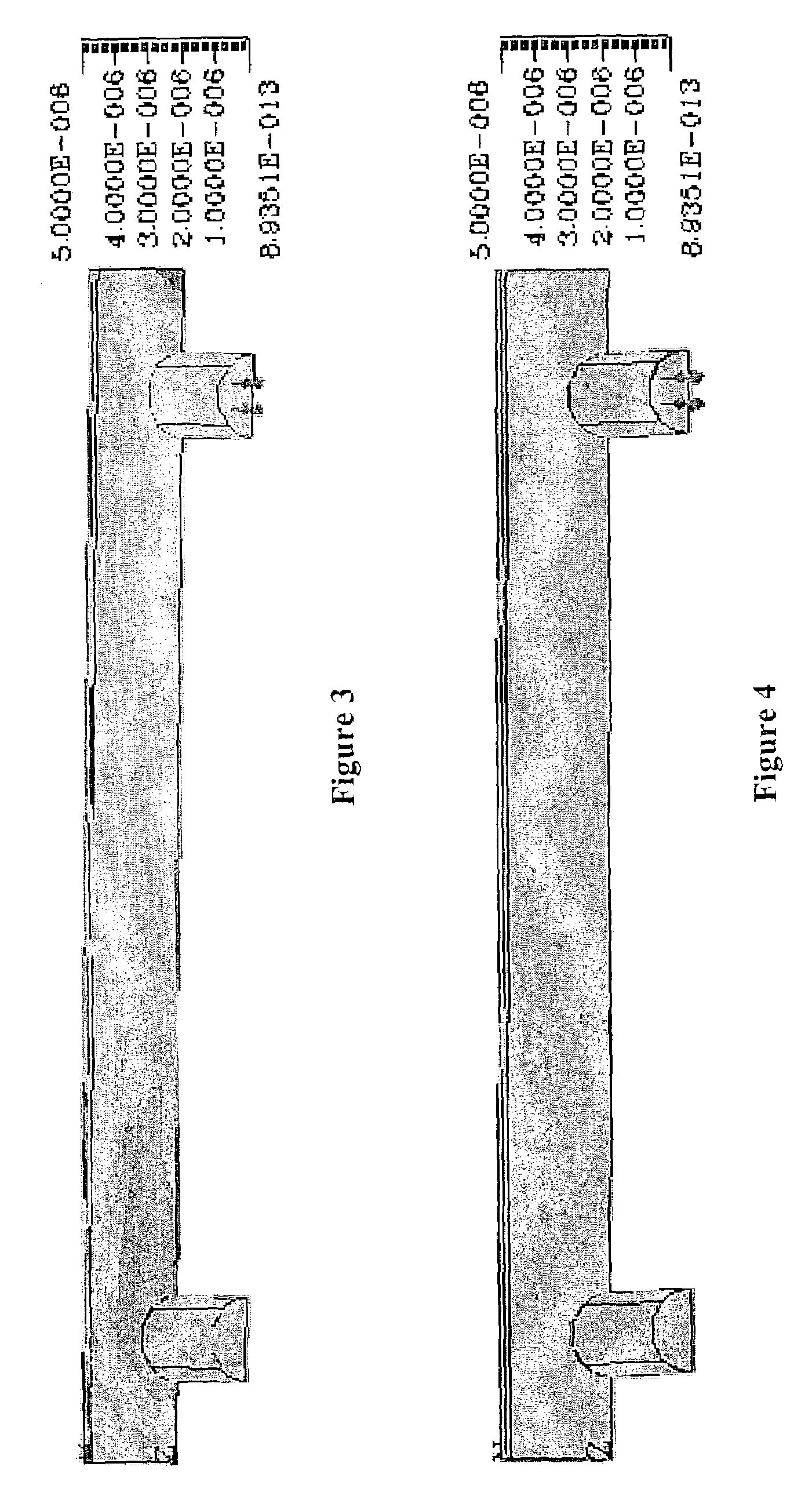Microcantilevers for biological and chemical assays and methods of making and using thereof
a technology of microcantilevers and applied in the field of microcantilevers for biological and chemical assays, can solve the problems of affecting the accuracy of measurements, unwanted deflection, and low sensitivity of prior art, and achieve the effect of less subject to drag
- Summary
- Abstract
- Description
- Claims
- Application Information
AI Technical Summary
Benefits of technology
Problems solved by technology
Method used
Image
Examples
Embodiment Construction
[0085]The present invention provides microcantilevers that may be used in methods and devices for detecting, measuring, monitoring, or analyzing low concentrations of at least one analyte in a fluid sample. In particular, the present invention provides microcantilevers upon which a specific binding agent may be immobilized for use in methods and devices for assaying ligand, present in a fluid sample, that specifically binds the specific binding agent.
[0086]As used herein, “assaying” is used interchangeably with “detecting”, “measuring”, “monitoring” and “analyzing”. As used herein, a “fluid sample” refers to a continuous amorphous substance that tends to flow and to conform to the outline of a container such as a liquid or a gas. Fluid samples include blood, plasma, urine, bile, breast milk, semen, water, liquid beverages, air, and the like. If one desires to test a solid sample for a given analyte according to the present invention, the solid sample may be made into a fluid sample ...
PUM
| Property | Measurement | Unit |
|---|---|---|
| distance | aaaaa | aaaaa |
| distance | aaaaa | aaaaa |
| distance | aaaaa | aaaaa |
Abstract
Description
Claims
Application Information
 Login to View More
Login to View More - R&D
- Intellectual Property
- Life Sciences
- Materials
- Tech Scout
- Unparalleled Data Quality
- Higher Quality Content
- 60% Fewer Hallucinations
Browse by: Latest US Patents, China's latest patents, Technical Efficacy Thesaurus, Application Domain, Technology Topic, Popular Technical Reports.
© 2025 PatSnap. All rights reserved.Legal|Privacy policy|Modern Slavery Act Transparency Statement|Sitemap|About US| Contact US: help@patsnap.com



